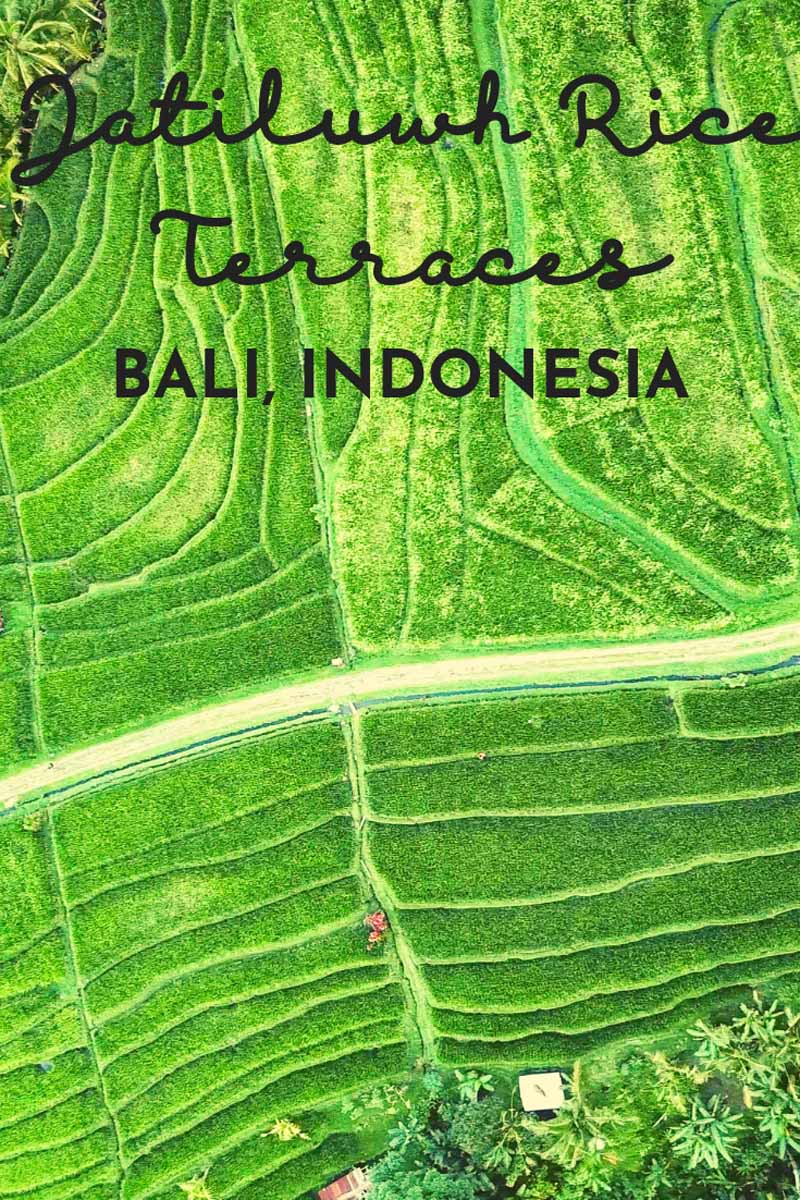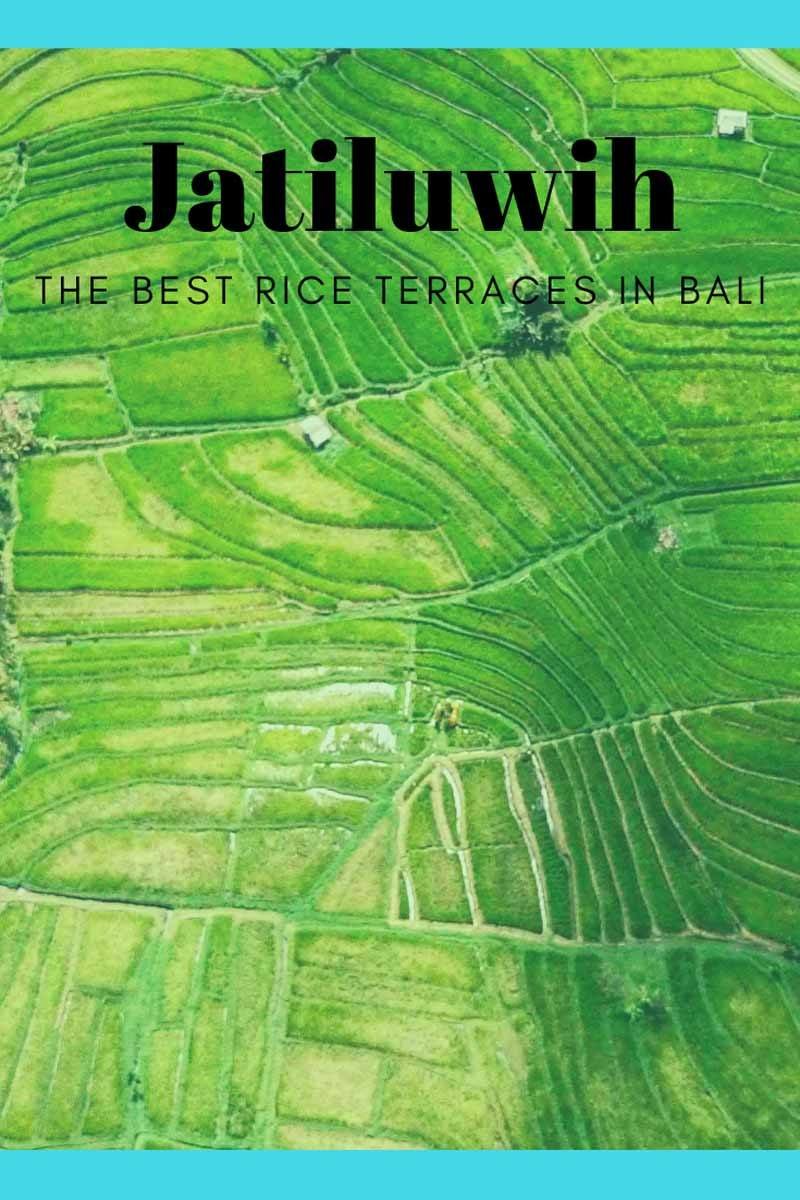Have you ever heard of Jatiluwih rice terraces in Bali? If you want to spend a day out in nature with not too many tourists (a rarity in Bali, I know!) then read on!
Are you planning to visit Bali? Then, I’m sure rice terraces will be on your list, along with other Bali must-dos, like visiting Ubud, surfing in Seminyak, and finding the best waterfalls in Bali.
If that’s the case, you may be wondering where to find the ideal place to get those perfect rice terraces pictures you find on Instagram. As soon as you get to Bali, you’ll realise that the island is far bigger than what many expect, and there’s plenty to see and do, including rice terraces everywhere.
However, there are only two places where rice terraces can be officially visited. Please don’t consider trespassing into private rice fields for your own photoshoot – Bali has enough problems with over tourism and travellers behaving irresponsibly as is, and you don’t need to add to that.
The two places where you can visit rice terraces in Bali are Tegalalang and Jatiluwih. This article will focus on Jatiluwih, the best rice terraces in Bali in our opinion – perfect for a day spent hiking, enjoying nature and taking pictures!

Jatiluwih vs Tegalalang Rice Terraces
We visited both Tegalalang and Jatiluwih rice terraces while in Bali, and we much preferred our experience at Jatiluwih. Let’s get into pros and cons for each, so you’ll understand the reasons behind our love for Jatiluwih.
Tegalalang rice terraces are just 10 km north of Ubud, aka Bali tourist central. There are plenty of tours on offer, both bookable in person or online, which result in THOUSANDS of tourists visiting daily.
On top of that, at Tegalalang you’ll find dozens of cafés and restaurants, plus ‘props’ for pictures, like the famous Love Bali sign, swings and nests. It’s a busy place, and visiting can be exhausting.
Tegalalang rice terraces are also quite small, and only cost 10K IDR to visit, but you’ll be asked for ‘donations’ by locals to visit their rice fields. Whether this is legit or a scam, I don’t know, but it sure makes the experience more stressful. However, even though Tegalalang rice terraces are small and located in a narrow valley, there are some secluded spaces, and the place is indeed very beautiful.
Let’s move onto Jatiluwih rice terraces. They are located further away from Ubud, and they’re much larger than Tegalalang, meaning it’s easier to get away from the crowds. There are a few cafés and restaurants in the terraces themselves, but the atmosphere is a lot more chilled compared to Tegalalang, and you won’t be asked for donations.
Jatiluwih rice terraces are also more ‘open’ compared to Tegalalang – views stretch for kilometers and may even include Mount Agung on clear days, so you’ll get very different views.
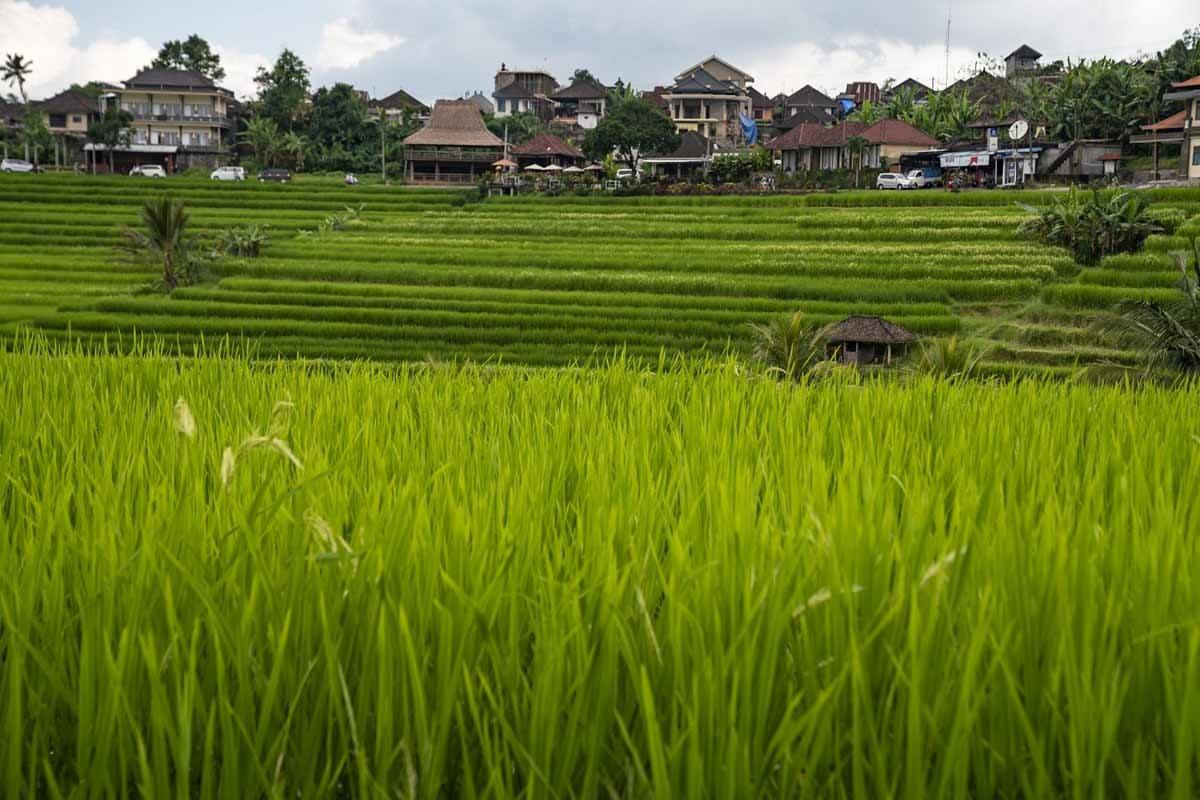
Jatiluwih – UNESCO World Heritage
Jatiluwih rice terraces are also part of the UNESCO World Heritage list because they’re an example of the Subak irrigation system, and a manifestation of the Tri Hita Karana philosophy.
Subak is an irrigation system that dates back over 1000 years, and sees irrigation not just as a way to water crops, but a way to create an artificial, sustainable ecosystem to include the water supply, rice fields, villages and temples.
The water supply is managed by priests in water temples, under the principles of Tri Hita Karana – the life philosophy you’ll encounter everywhere in Bali, translating as harmony with God, among people, and with nature and the environment.
We highly recommend visiting Jatiluwih with a guide who can explain more about Subak and the Tri Hita Karana philosophy, or at least to read up about the topic before visiting.
You’ll see that Bali is not just about Instagrammable places – spirituality runs through the core of this amazing island, and knowing more about traditional culture will help you appreciate it deeply.
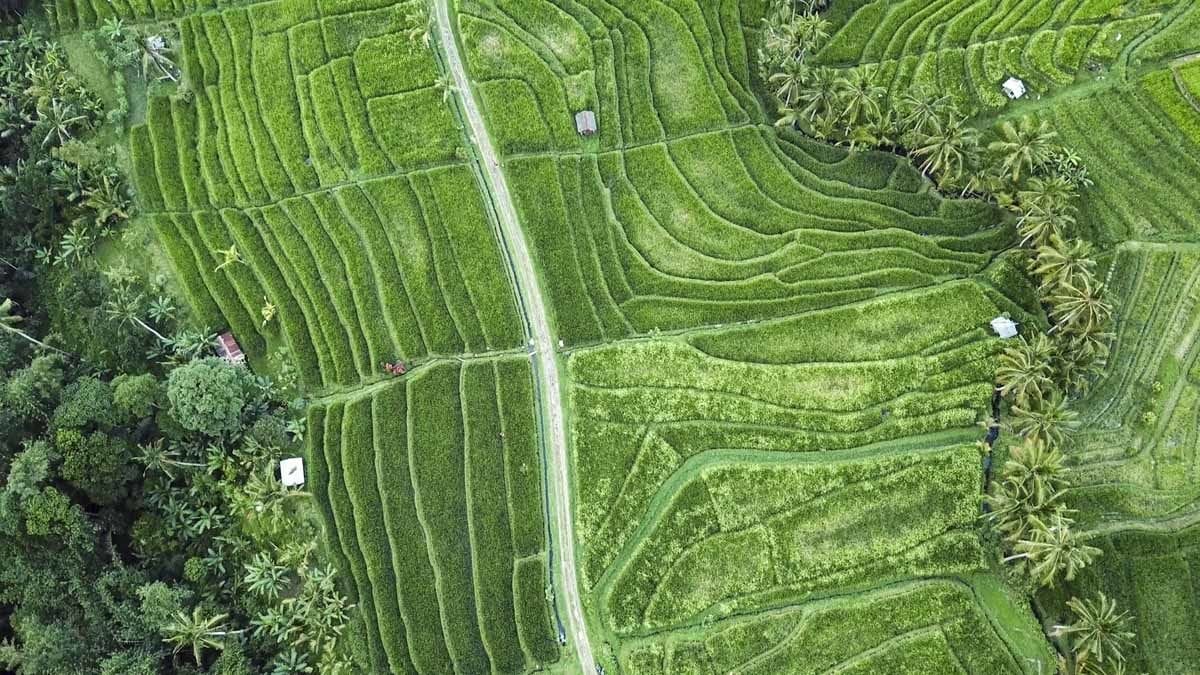
Where are Jatiluwih Rice Terraces?
Jatiluwih rice terraces are located in Central Bali, just south of the lake area. They’re about 40 km from Ubud, and driving time ranges between 1 hour and a half and 2 hours, depending on traffic.
It takes about the same time to drive to Jatiluwih from Canggu, and an extra half an hour to get there from Seminyak or Kuta.
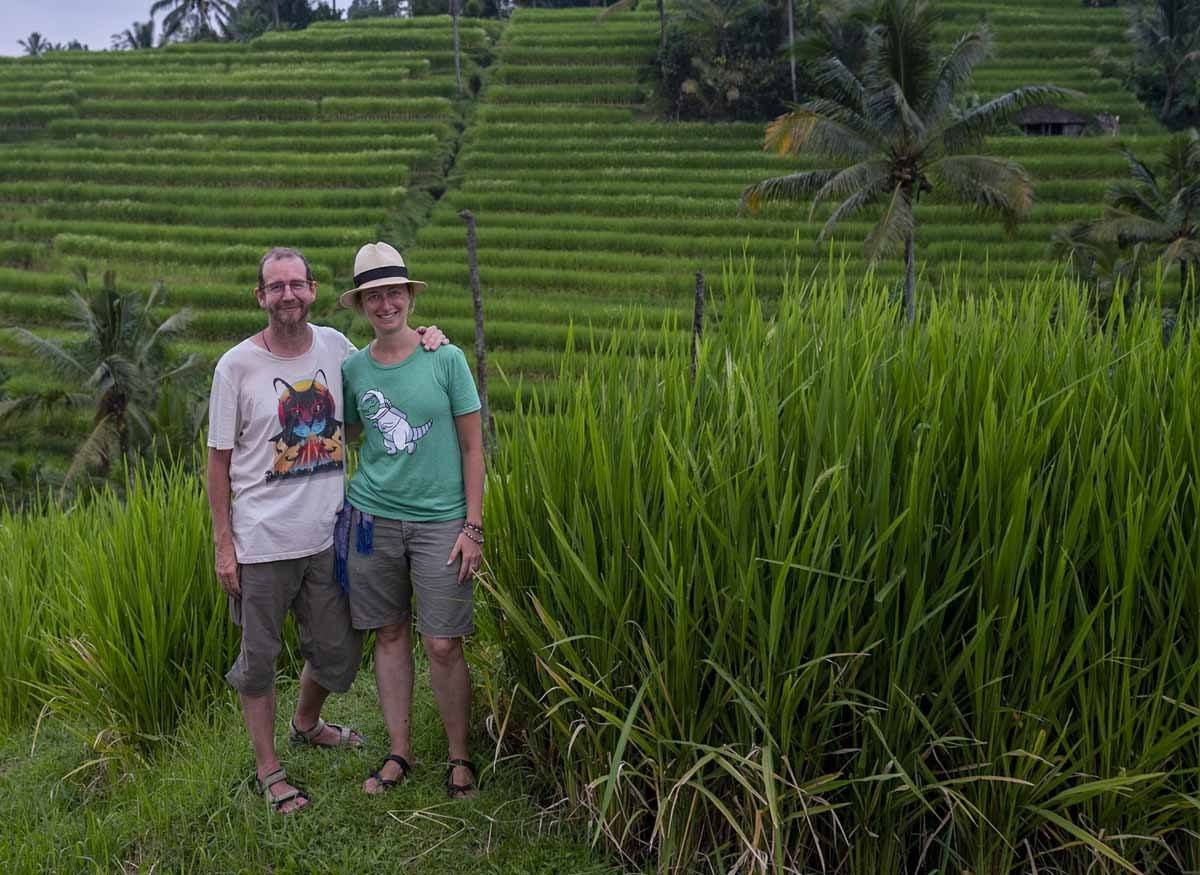
How to Get to Jatiluwih
We visited Jatiluwih rice terraces from Canggu, and it took us about 1 hour 20 minutes to get there riding our scooter from our accommodation in Tumbak Bayuh. The way there was easy enough – we mainly rode along small village roads, and followed busy thoroughfares only for about 15 minutes each way.
Riding your own scooter will allow you freedom to get in and out, but PLEASE be careful and make sure you have travel insurance that covers motorbike accidents.
You can also hire a local driver to take you to Jatiluwih. We recommend our friend Yung – her phone number is +62 811 5997 995, and her rates are around 600K IDR per day.
Last but not least, you can book a tour – here are some of the best tours to Jatiluwih, including some where you can explore the rice terraces by ebike!
- Bali: UNESCO World Heritage Sites Small Group Tour
- UNESCO Sites: Bedugul, Jatiluwih and Tanah Lot Full-Day Tour
- Jatiluwih (UNESCO Site) 2-Hour E-Bike Cycling Tour
- Bali: Jatiluwih Rice Terraces 1-Hour Electric Bike Tour
- Lakes and Temples of Bedugul and Tanah Lot
- Tanah Lot, the Nung Nung Waterfalls and Bedugul
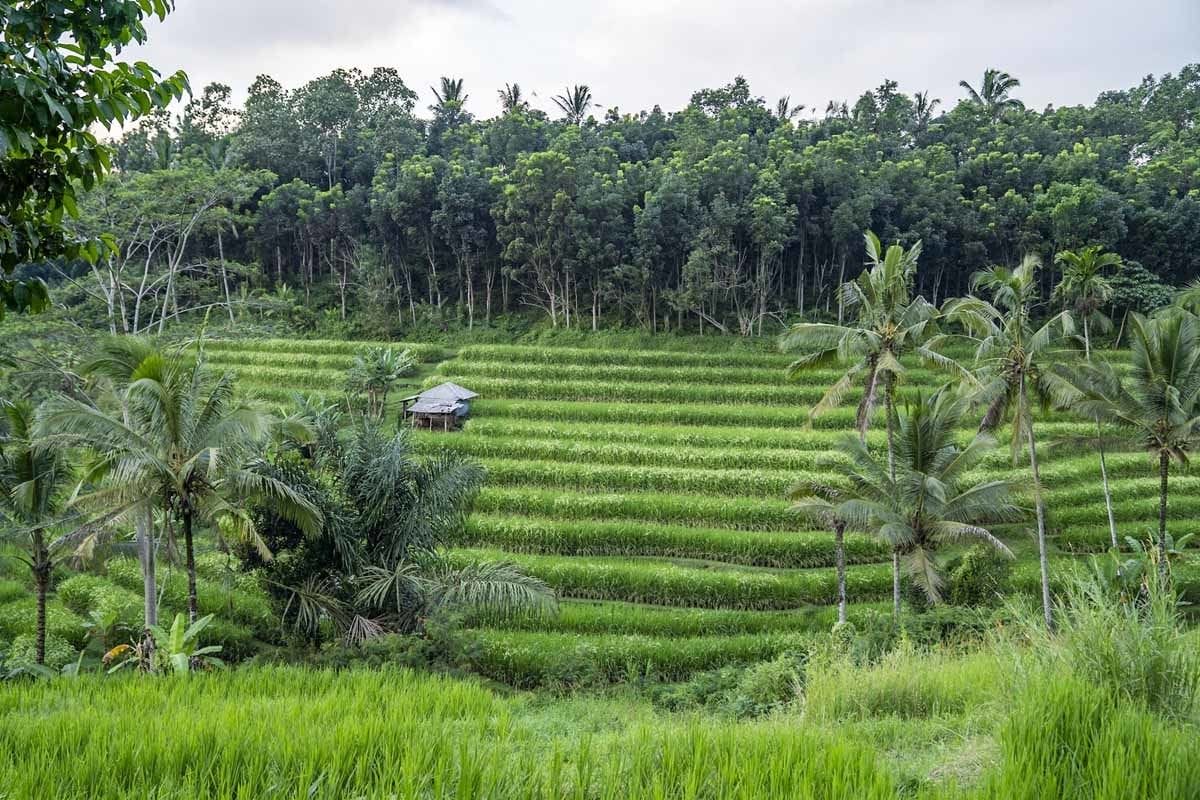
Best Time to Visit Jatiluwih
Jatiluwih rice terraces can be visited year round. During the dry season (May/Oct) you’ll have the best chance to get clear blue skies and view of the mountains and volcanoes, whereas during the wet season (Nov/Apr) skies may be overcast, but you’ll get respite from the extreme Bali heat.
If you’re visiting on a hot day, try to avoid visiting Jatiluwih during the hottest part of the day. The terraces are open every day between 8.30 AM and 6 PM – try visiting just after it opens, or after 4 PM, when the temperature is at its most bearable.
If you’re visiting for sunset and planning to ride your scooter back to Ubud, Canggu or elsewhere afterwards, please drive carefully as the first part of the journey is very, very dark!
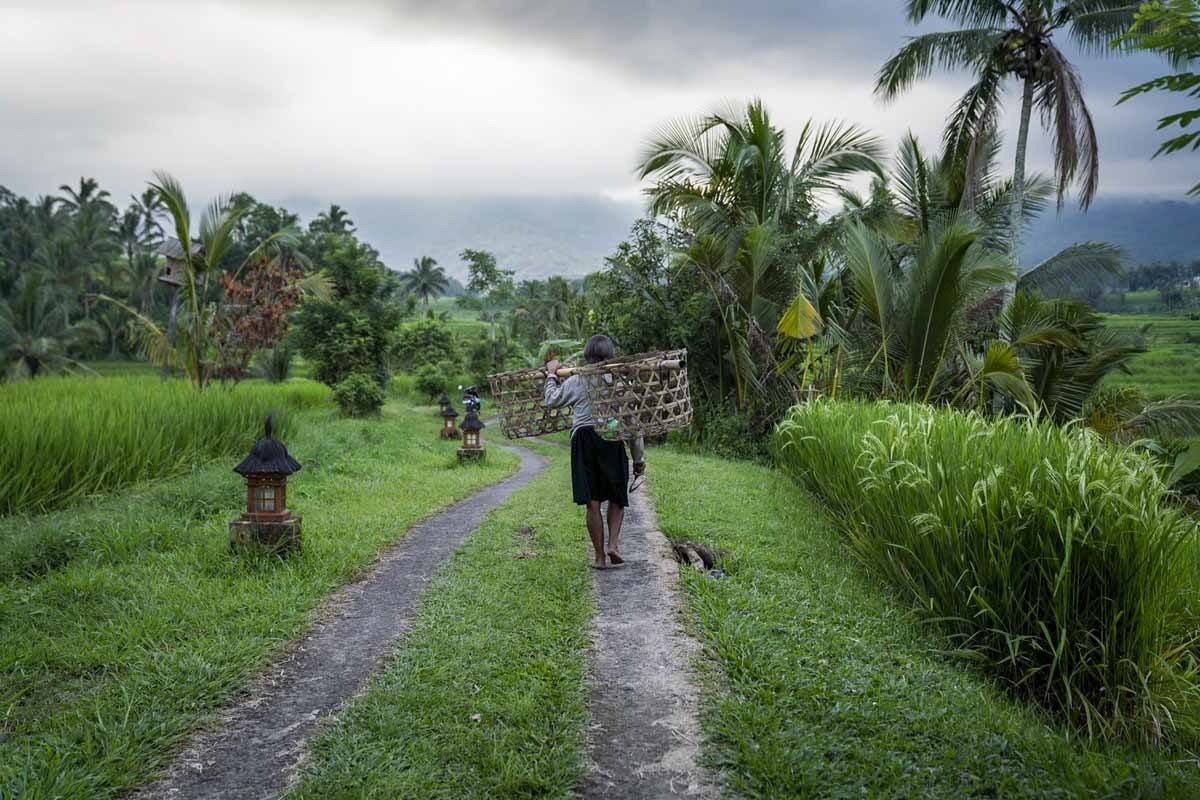
Jatiluwih Entrance Fee
Just before entering Jatiluwih village, you’ll notice a checkpoint on the roadside. All cars and scooters are usually stopped and asked to purchase a ticket to enter the rice terraces, at a cost of 40K IDR per person. Then you’ll have to drive/ride another couple of kilometers before getting to the entrance and parking lot.
If you’re just driving through and not actually entering the rice terraces, just say so to the guards. However, if you’re thinking to do so to get away from paying your entrance fee, be warned – there’s another checkpoint right before you enter, and if you don’t have your ticket you’ll have to get back to the first checkpoint to buy it!
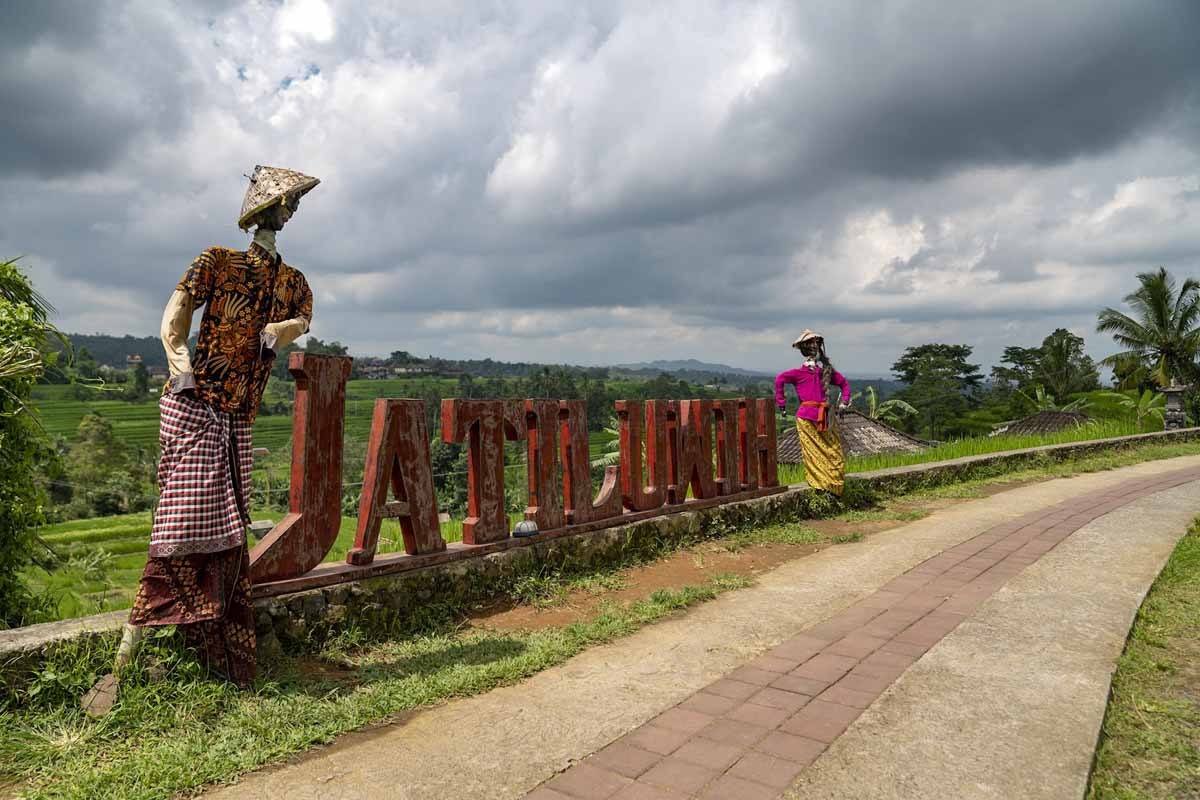
Hiking Jatiluwih Rice Terraces
I’m sure you’ll be as amazed as we were by the beauty of Jatiluwih. The rice terraces span 600 hectares, and the name is derived from two words – ‘jati’, meaning ‘real’, and ‘luwih’, which means ‘beautiful’. It translates as ‘really beautiful’, and I am sure you will agree.
Once you park your car or scooter, you just need to cross the road to reach the entrance to the rice terraces, easy to recognise thanks to the large ‘Jatiluwih’ sign.
You can choose to go hiking through Jatiluwih, or explore the rice terraces riding a bicycle or ebike. We also saw people riding scooters, but I would recommend against doing so, as Jatiluwih is one of the few places in Bali where you can walk surrounded by nature!
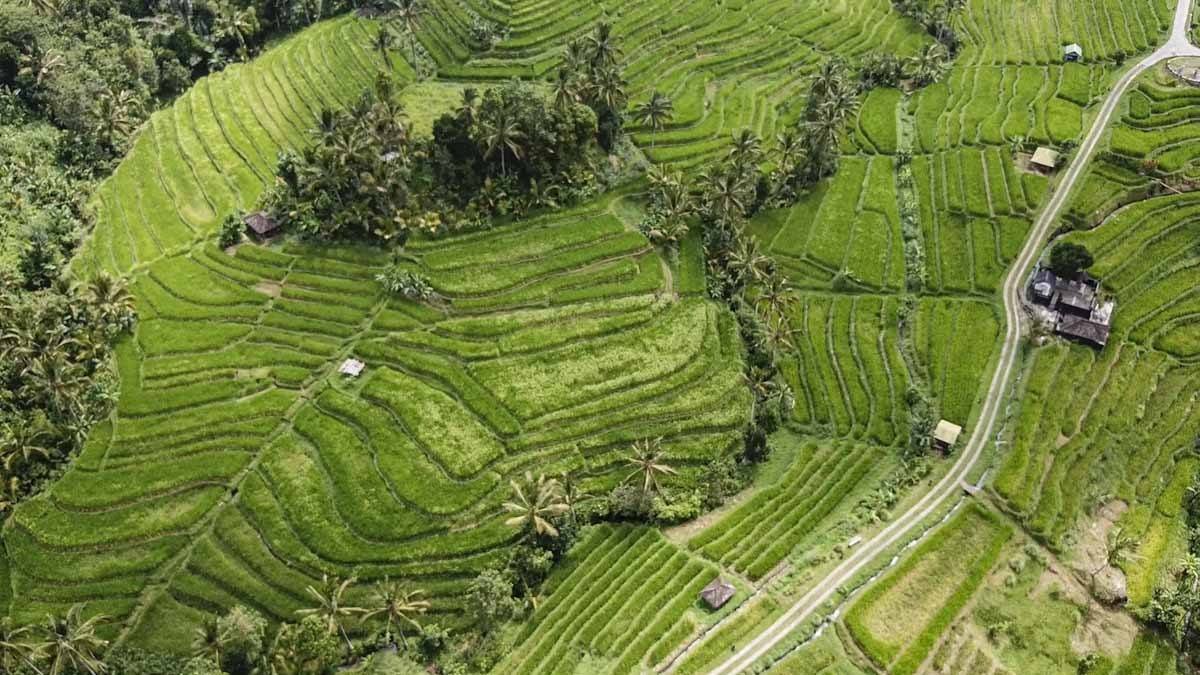
Near the entrance you’ll also find a map with four different hiking routes, all colour coded, ranging in distance from 1.4 km (the ‘Short Track’, marked in red) to 5.5 km (the ‘Extra Track’, marked in green). All through Jatiluwih there are wooden arrows saying ‘Tracking Route’, with the tip of a different colour depending on what track they refer to.
To be honest, it’s really hard to get lost while hiking the Jatiluwih rice terraces. The main paths are all paved in concrete and traverse the rice fields from one side to the other. You always have the option to take smaller side paths, leading to places like temples, local restaurants, and an outdoor amphitheatre where an arts festival was taking place.
We spent an entire afternoon hiking around Jatiluwih, not following any trail in particular, just exploring at will. We flew our drone, took pictures with our friends, and simply enjoyed the feeling of being in a place with no traffic or scooters.
It was an overcast day so we missed out on sunset and views, but it was definitely one of the most enjoyable days of our two weeks in Bali!
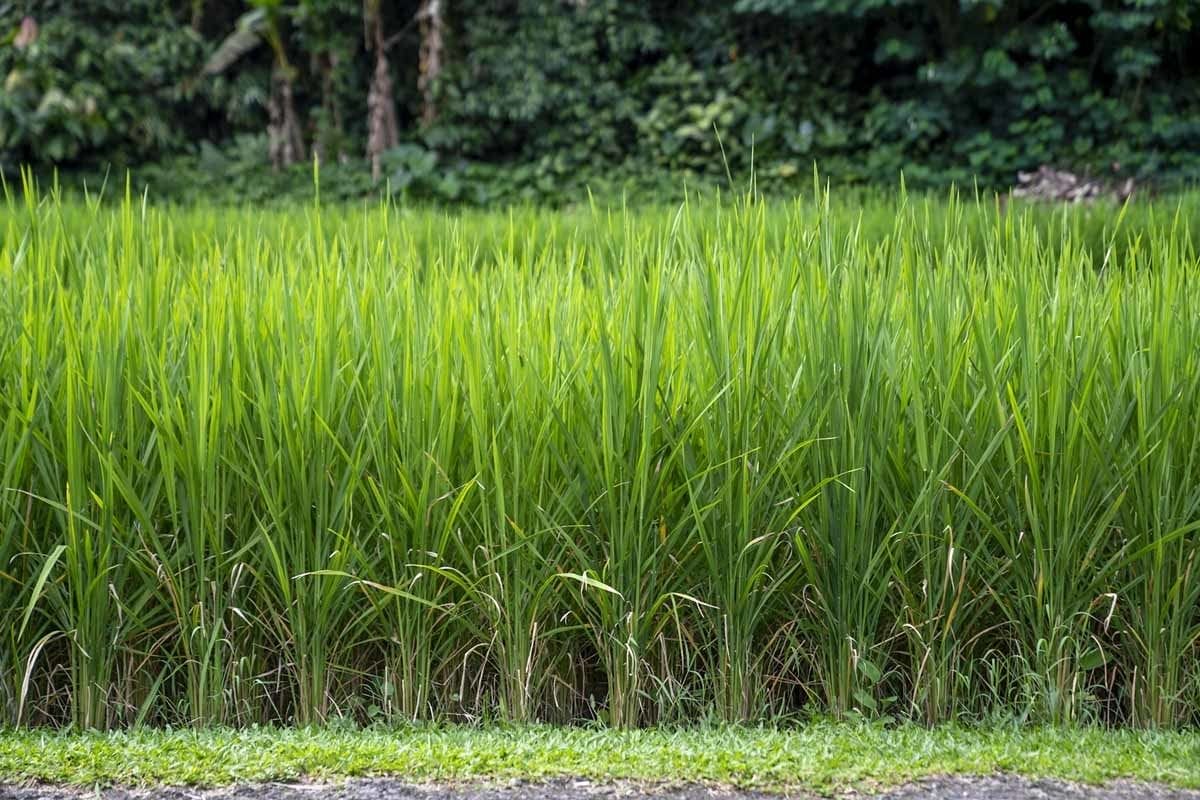
Restaurants at Jatiluwih Rice Terraces
All around Jatiluwih you’ll find small warung offering drinks and simple dishes like nasi and mee goreng. We stopped at one near the amphitheatre for a fresh coconut when the heat got too much – the place had no menus and was not marked on Google Maps, so it’s hard to explain how to get there, but to be honest if you just want a cold drink, any place will do.
For those planning to have lunch at Jatiluwih, we warmly recommend stopping at Warung Nyoman Jatiluwih, about 3 km away from the entrance. This simple warung is run by a young guy, Nyoman, and his mother, and not only does it have the BEST view ever over the Jatiluwih rice terraces, it also serves delicious meals, all made with local, organic ingredients. My red rice nasi goreng was one of the best in Bali – so good I forgot to take a picture!
If you prefer something closer to the rice terraces, opt for Gong Jatiluwih, a large buffet restaurant also serving pizza. We didn’t eat there so we can’t comment, but it looked popular with groups.

Where to Stay near Jatiluwih Rice Terraces
We visited Jatiluwih as a day trip from Canggu, but if we were to visit again we’d definitely spend the night to avoid driving in the dark on the way back, and to be the first ones visiting in the morning.
Here are a few well rated places to stay near Jatiluwih rice terraces for a night to remember in this magical place in Bali!
- Prana Dewi Mountain Resort – surrounded by nature, with an outdoor pool overlooking the mountains!
- Ti Amo Bali – boutique accommodation in a stunning villa.
- Sang Giri Mountain Glamping Camp – luxury glamping just 5 minutes from the rice terraces!
- Villa Loti – secluded villa accommodation with top service.
- Tepi Sawah Lodge – perfect for those wanting to experience village life with a dash of luxury!
- D’wan Tea Mountain Side – luxury homestay-style accommodation boasting an outdoor pool with rice terrace views.
Pin it for later?
